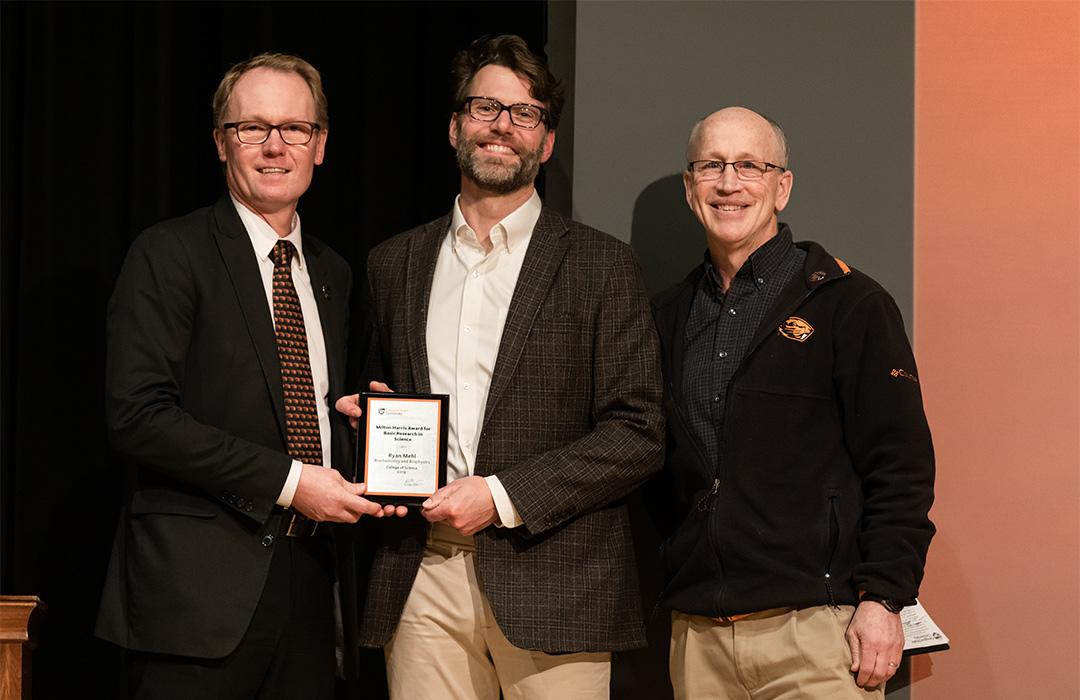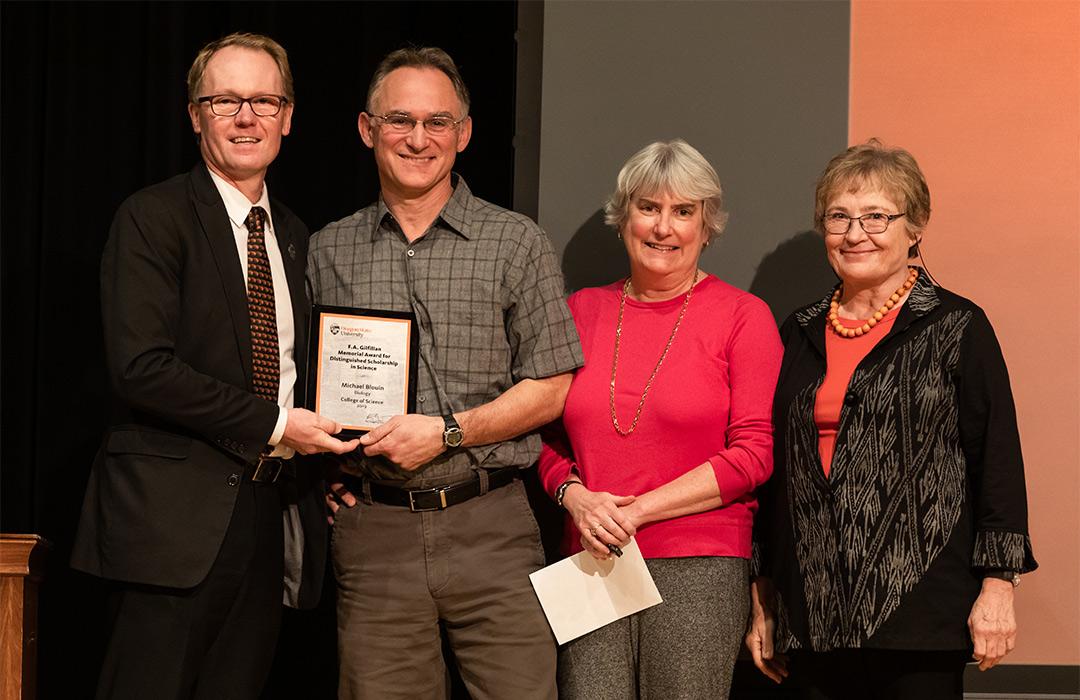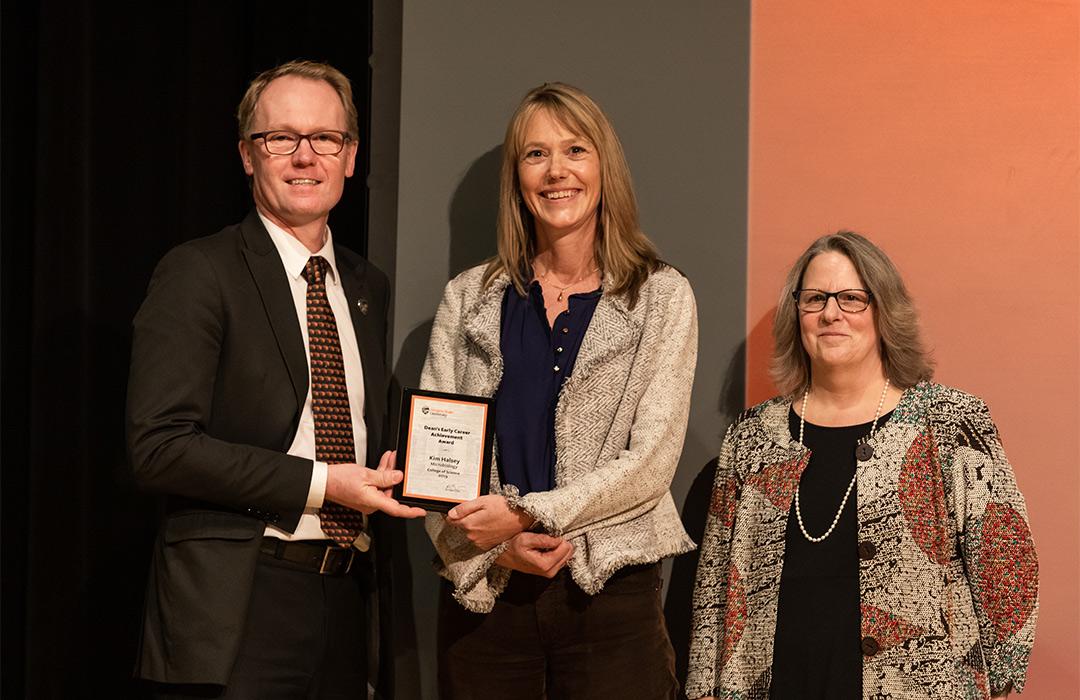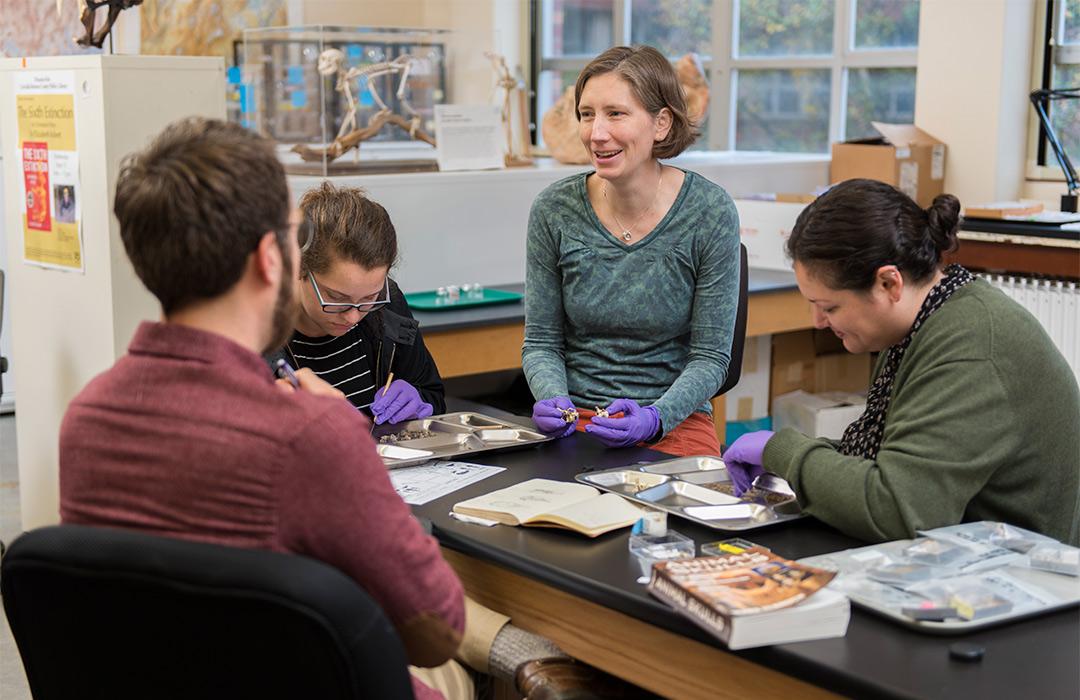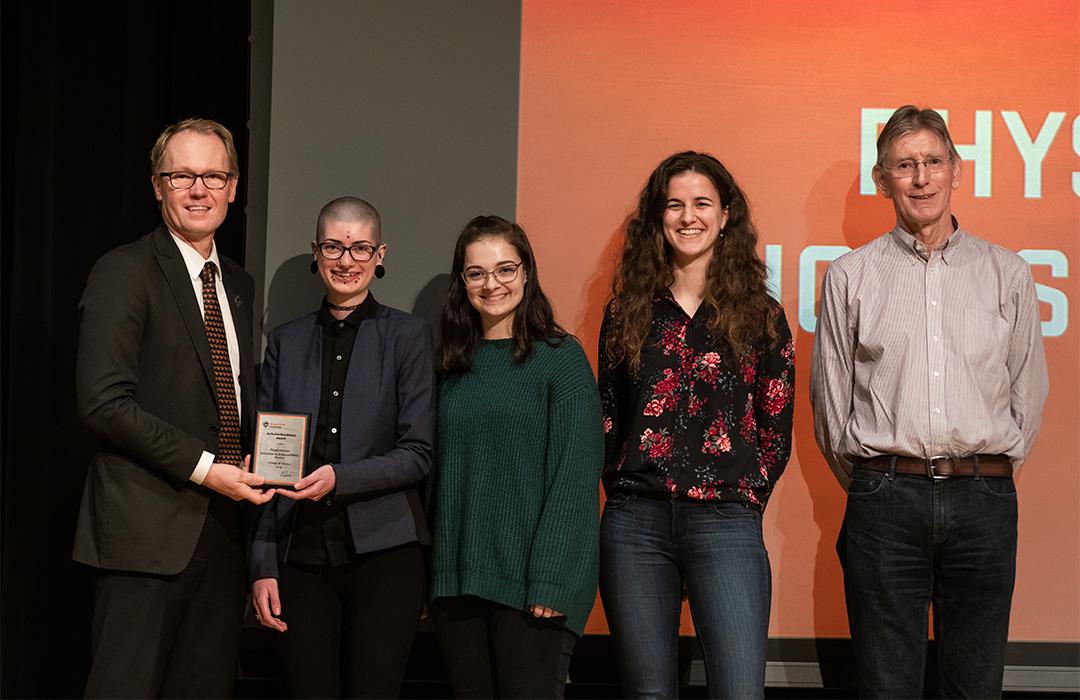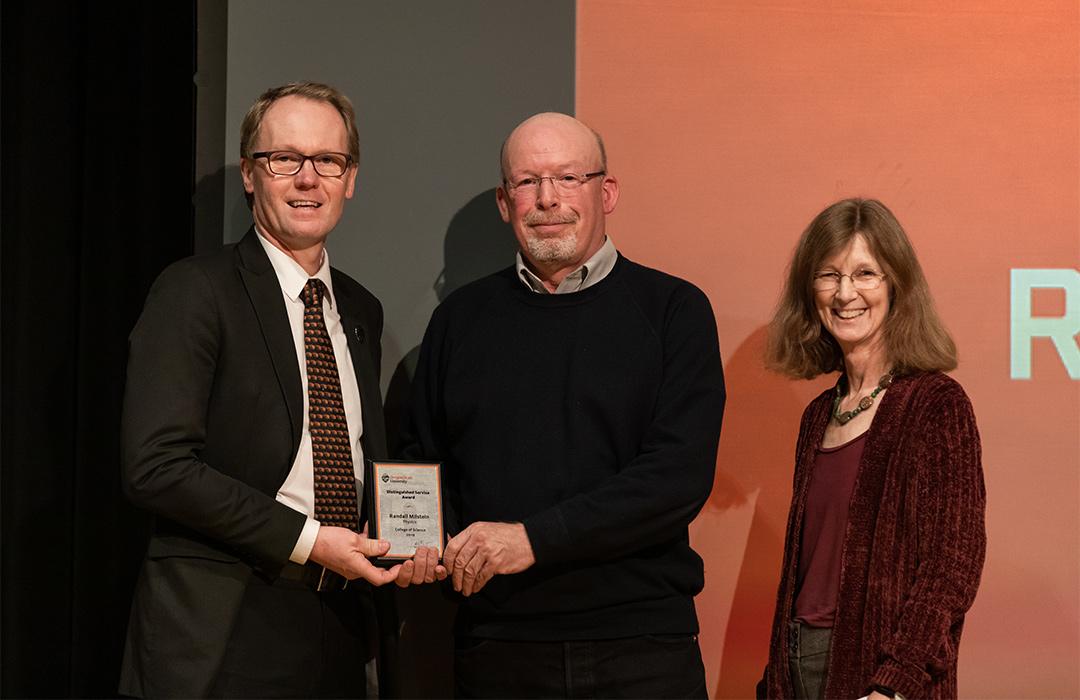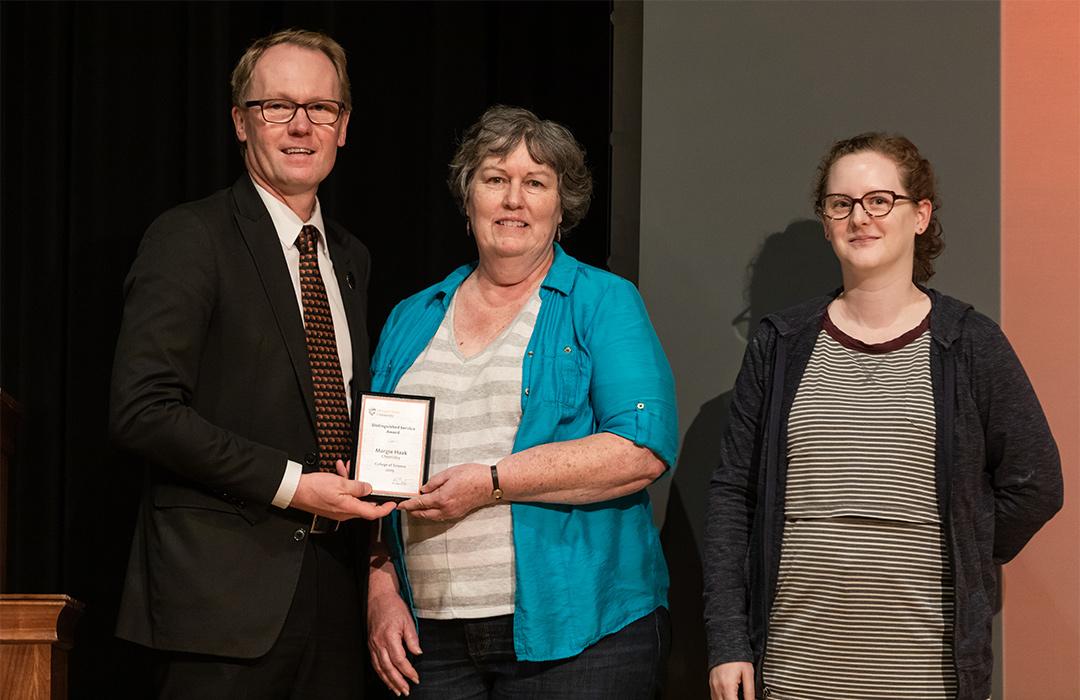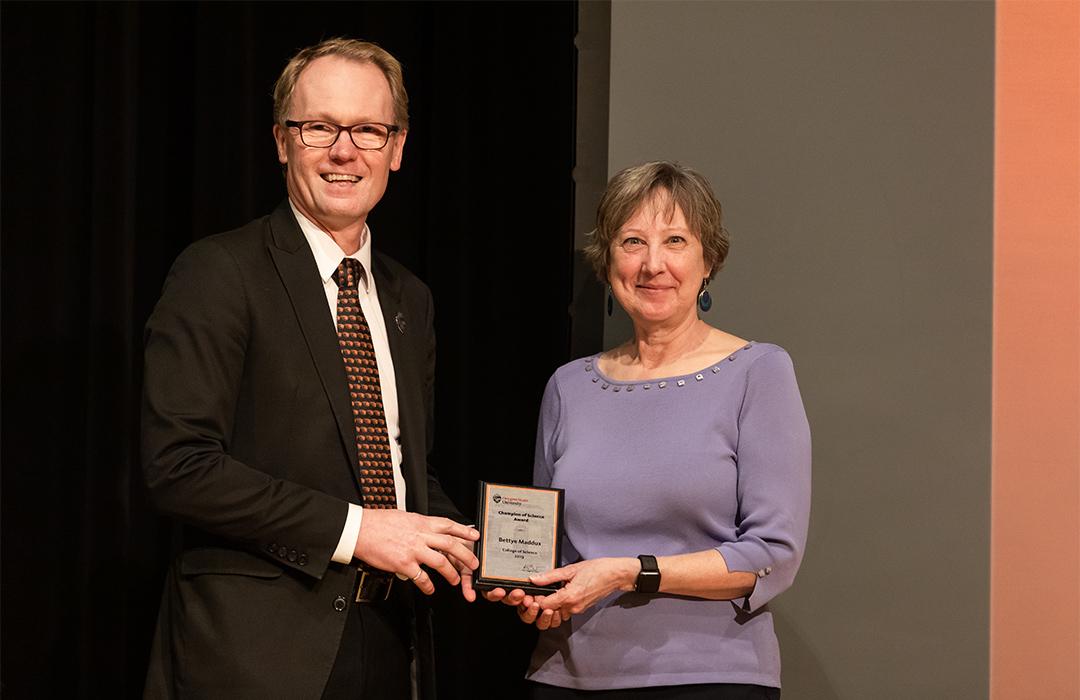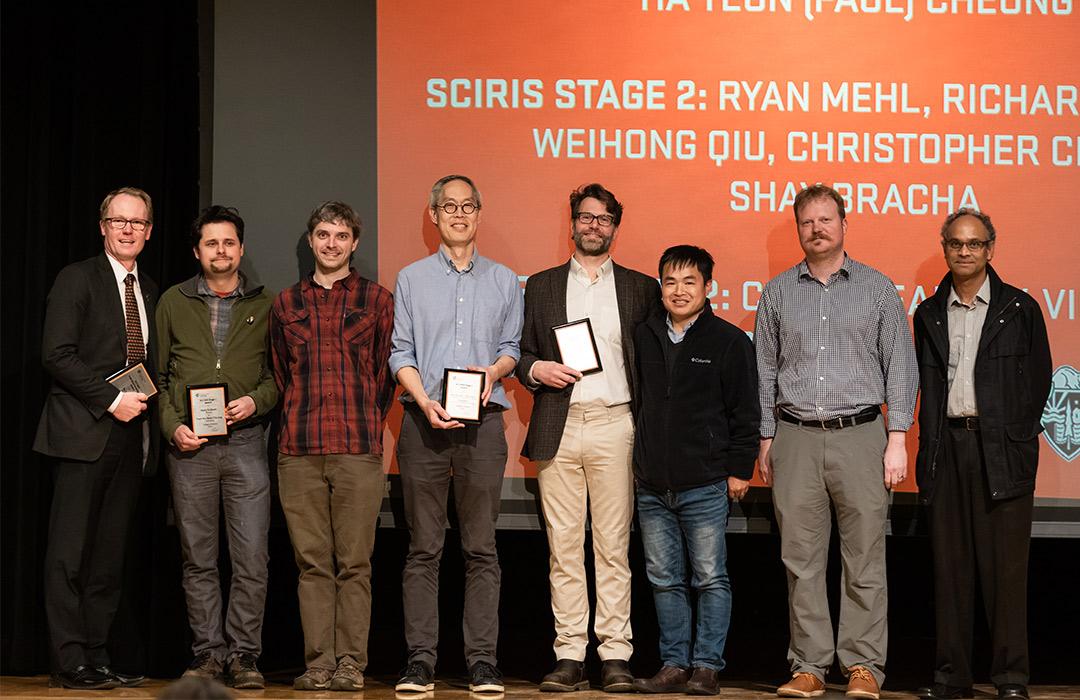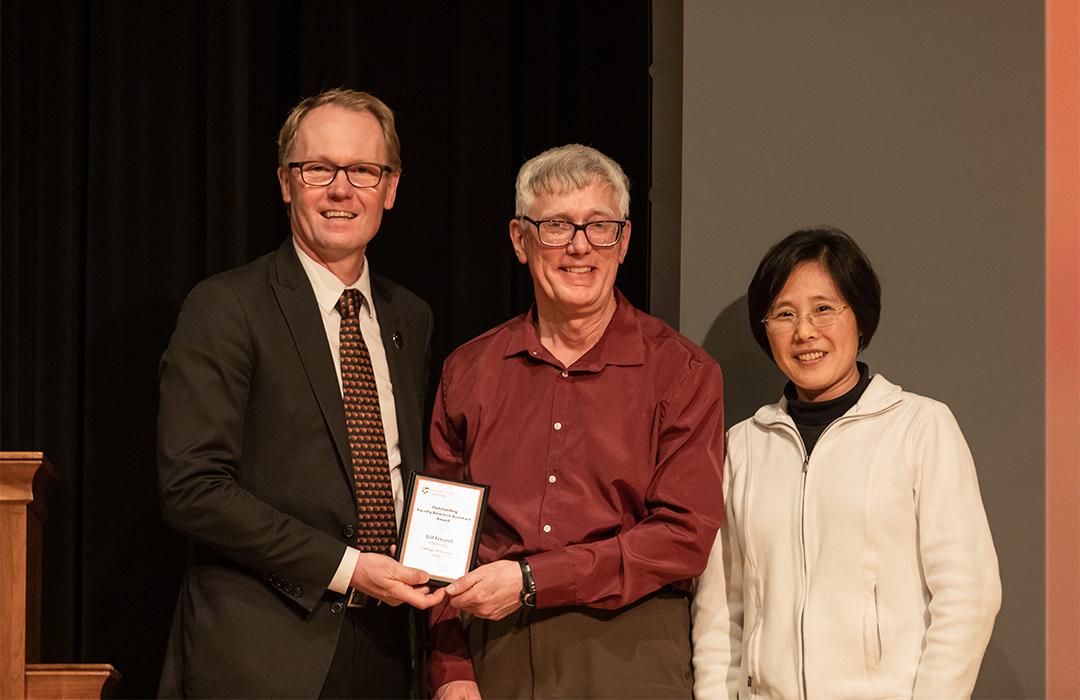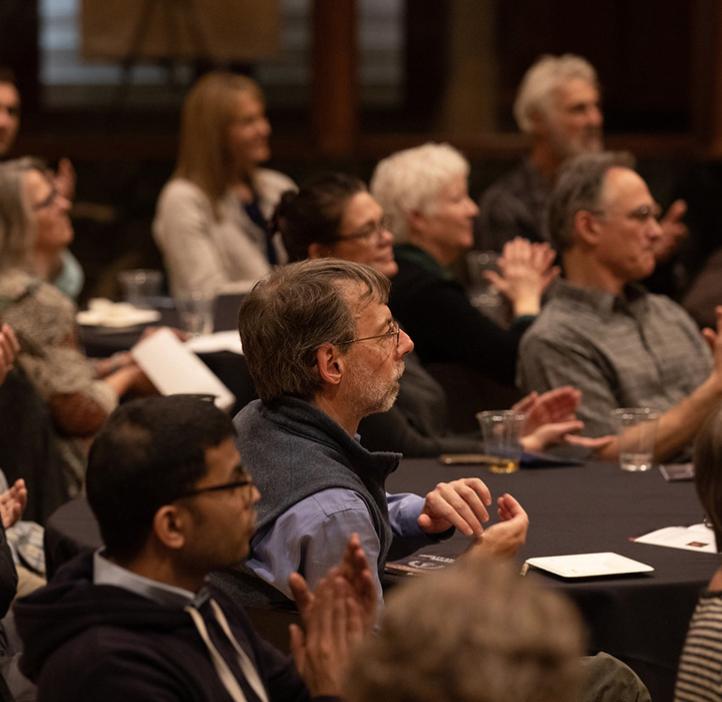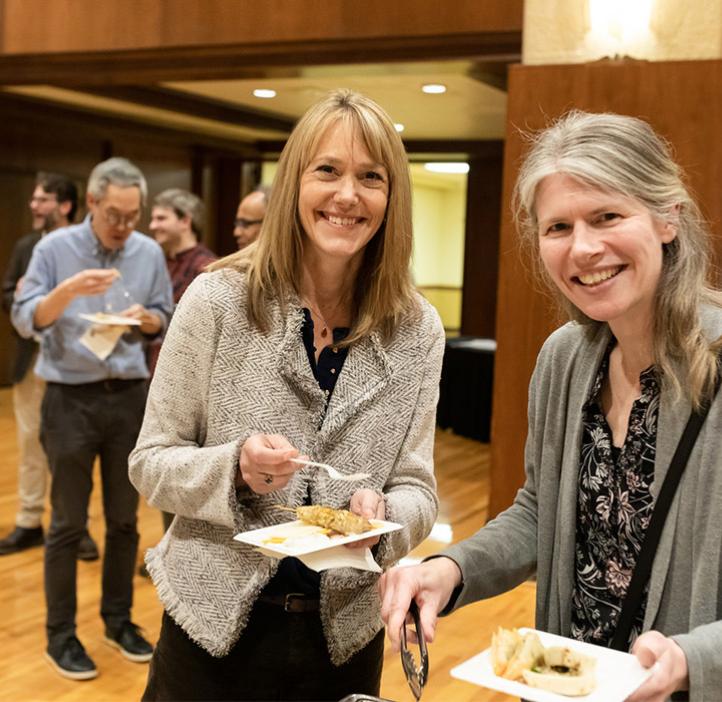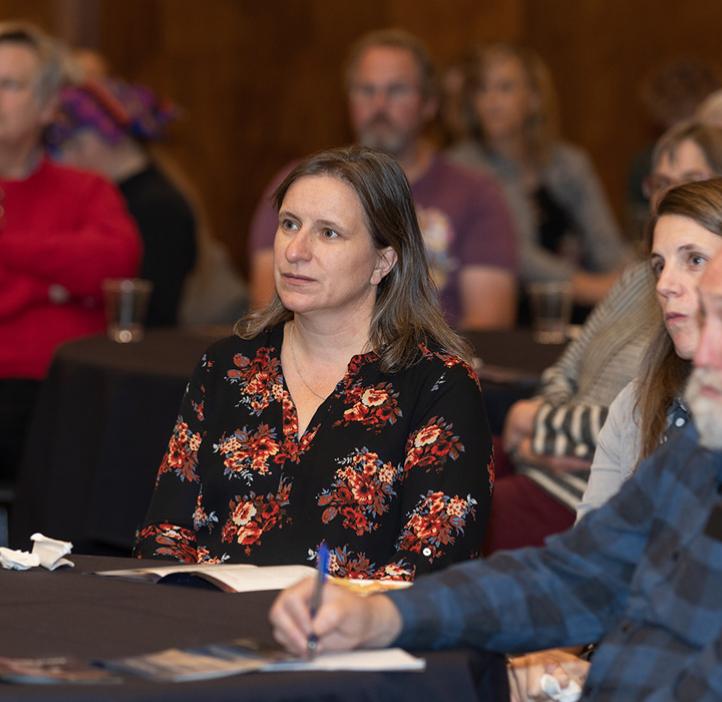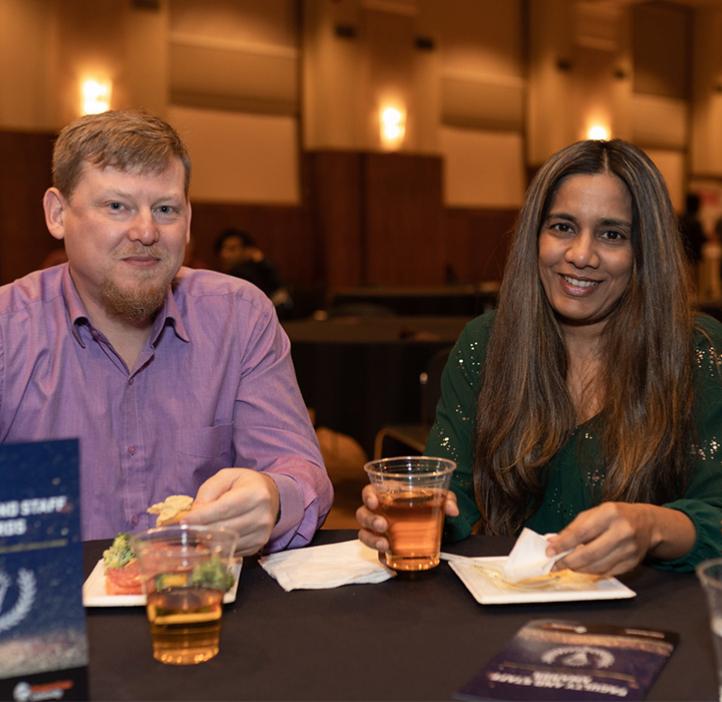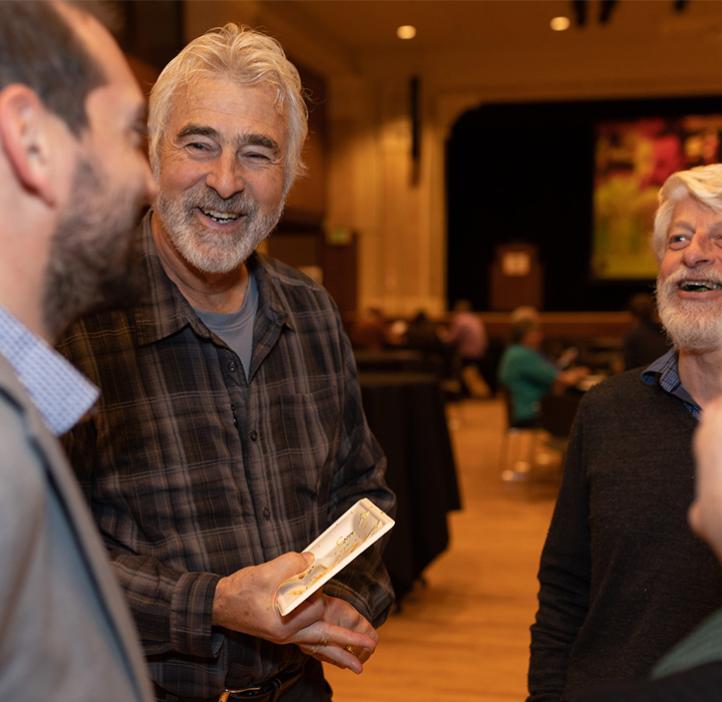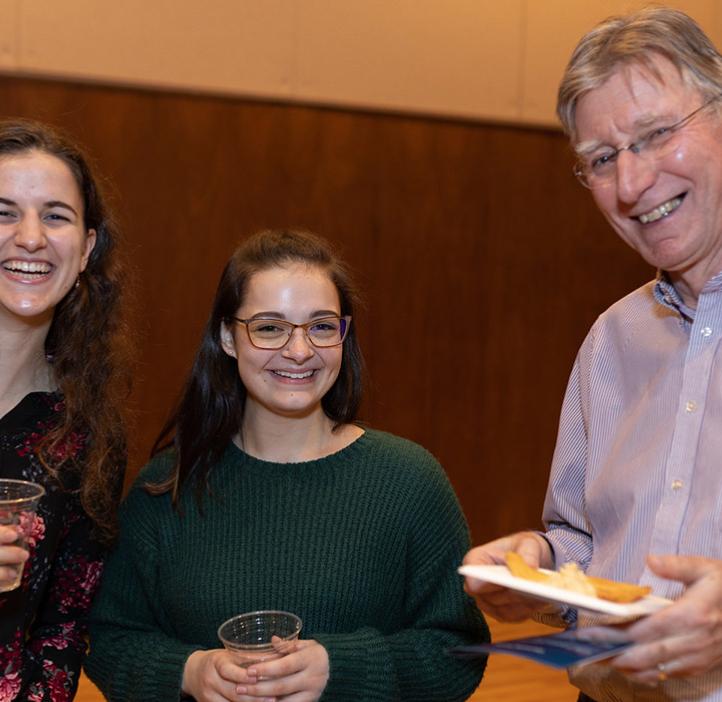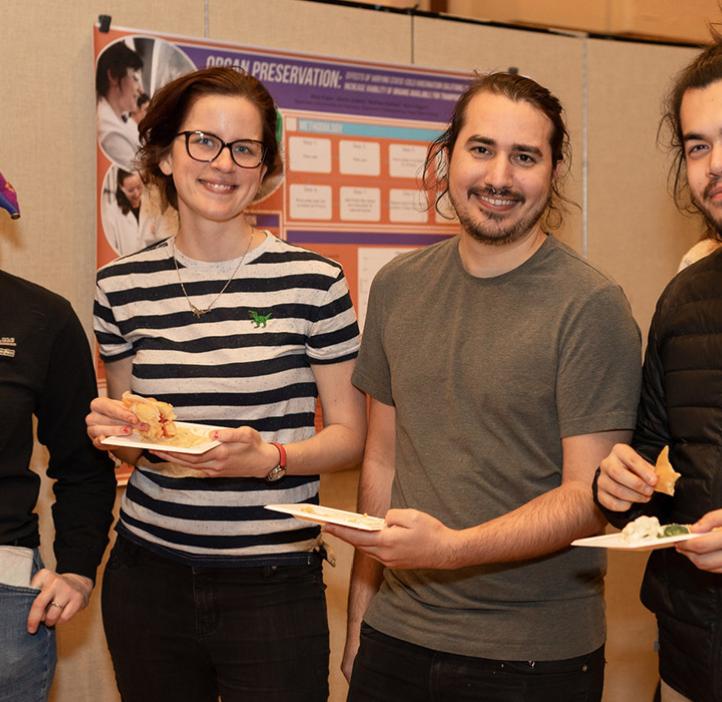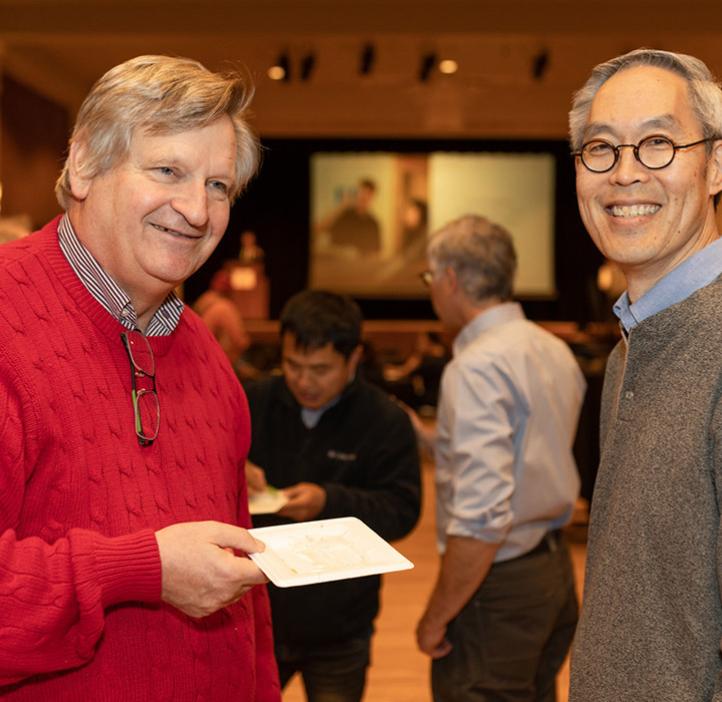Six research teams won the Science Research and Innovation Seed Program (SciRis) and the Betty Wang Discovery Fund Awards for projects that contribute to physical chemistry, organic chemistry, solar cells and thin film display transistors, human health and the development of diagnostic tools.
The SciRis awards went to the following teams:
Assistant Professor of physics Bo Sun, along with collaborators from the University of California, San Diego and Northeastern University, was awarded $10,000 to elucidate the causes and consequences of cancer cell migrational phenotype plasticity, which contributes critically to the process of cancer metastasis. The research will potentially lay the groundwork to develop new classes of cancer screening assays and metastasis-targeting treatments.
Biochemists Ryan Mehl, Rick Cooley, physicist Weihong Qiu, and Chris Cebra and Shay Brachafrom the Carlson College of Veterinary Medicine received the SciRis Stage 2 award for their project “Chemically Functionalized Nanobodies.” Nanobodies, a subclass of small antibody fragments, where discovered in 1989 and represent an exciting new technology for the development of therapeutic and diagnostic agents.
The $75,000 grant will help the researchers develop a unique technology platform that enables generation of chemically functionalized nanobodies which will function as new therapeutic and diagnostic tools opening up new avenues for medicine and basic research. The resulting chemically functionalized nanobodies will be engineered to bind a specific antigen/protein target and deliver a therapeutic antibody
Chris Beaudry, professor of chemistry, Victor Hsu, associate professor of biochemistry and Siva Kolluri in the College of Agricultural Sciences received the SciRis Stage II award for their project, “Homoharringtonine: Chemical Synthesis amd Evaluation of Designed Analogs.” The group will conduct research on analogs of Homoharringtonine (HHT) with improved pharmaceutical properties. HHT is a plant alkaloid isolated from the plum yew Cephalotaxus harringtonii.
HHT shows great promise as a starting point for the development of new medicines for multiple forms of cancer, however it is highly expensive and difficult to acquire both as a chemical and as a medicine. Among other objectives, the group will work on creating an efficient chemical synthesis of HHT which quadruples the chemical yield, and can be used for investigation in combination therapies and evaluation in modern drug delivery systems.
Physicist Matthew Graham and chemist Paul Cheong received a $10,000 SCiRIs Stage I award for their project “Performance Optimization of Transistors and Solar Photovoltaics by Ultrabroadband Photoconductance Microscopy of Trap-State Density and Lifetimes.” The team will further enhance and develop an ultrabroadband photoconductance microscope that was invented in the Graham lab in 2016. This novel microscope tackles fundamental grand challenges that inhibit the performance of photovoltaic and thin film display transistors.
The Betty Wang Discovery Fund made two awards to maintain state-of-the-art laboratories to advance fundamental discoveries in the basic sciences.
Associate professor of Chemistry Chong Fang was awarded funds for a new fluorometer in the ultrafast laser spectroscopy lab at Linus Pauling Science Center. Chemistry professors Chris Beaudry and Paul Blakemore received a grant to purchase an improved model of a microwave synthesis reactor, an essential technology for organic synthesis.
Awards for administrative excellence

